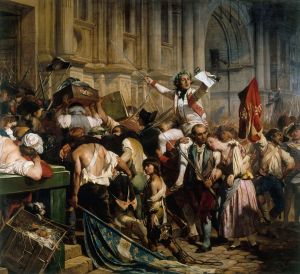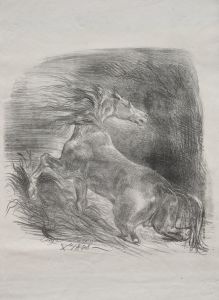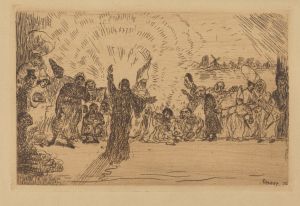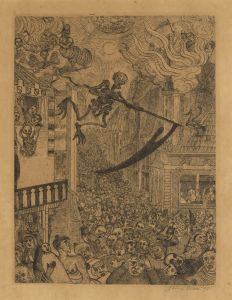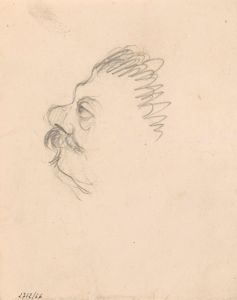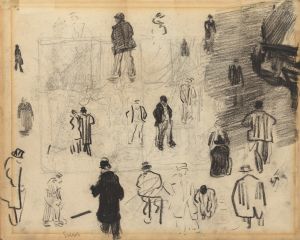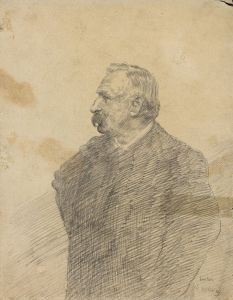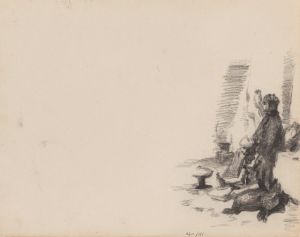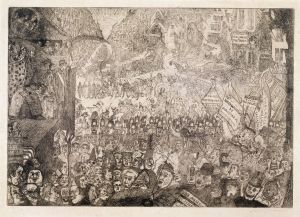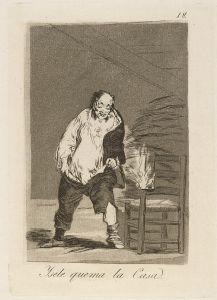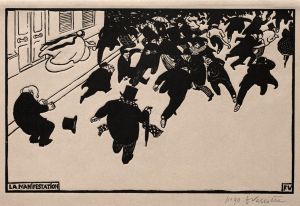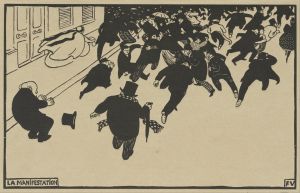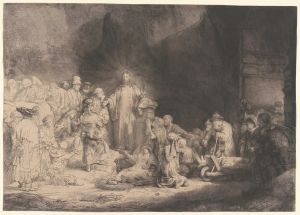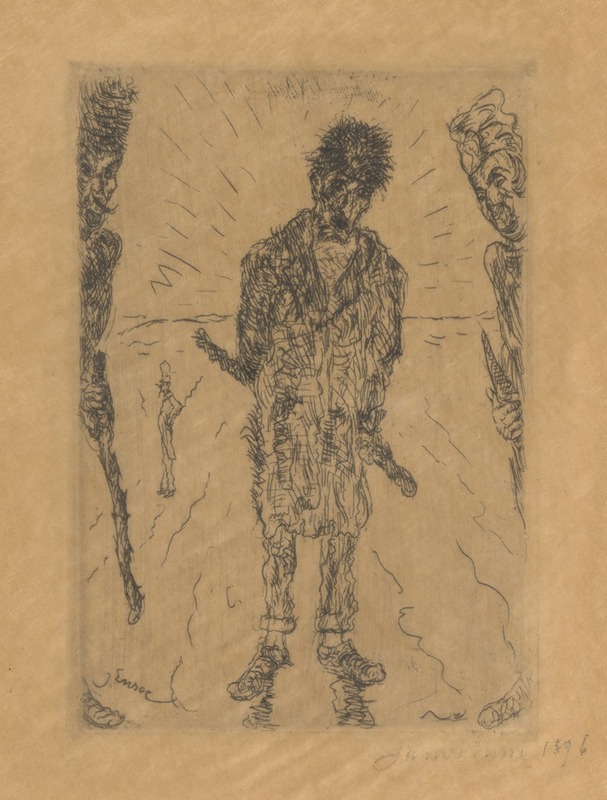
De vechtersbazen
A hand-painted replica of James Ensor’s masterpiece De vechtersbazen, meticulously crafted by professional artists to capture the true essence of the original. Each piece is created with museum-quality canvas and rare mineral pigments, carefully painted by experienced artists with delicate brushstrokes and rich, layered colors to perfectly recreate the texture of the original artwork. Unlike machine-printed reproductions, this hand-painted version brings the painting to life, infused with the artist’s emotions and skill in every stroke. Whether for personal collection or home decoration, it instantly elevates the artistic atmosphere of any space.
James Ensor, a prominent Belgian painter and printmaker, is known for his unique and often provocative works that blend elements of satire, fantasy, and social commentary. One of his notable paintings is "De vechtersbazen," which translates to "The Fighters" in English. This painting is a significant example of Ensor's distinctive style and thematic interests.
James Ensor was born in 1860 in Ostend, Belgium, and spent most of his life there. He was a leading figure in the Symbolist movement and played a crucial role in the development of modern art in Belgium. Ensor's work is characterized by its vivid use of color, imaginative compositions, and a penchant for the grotesque and the absurd. His paintings often explore themes of mortality, identity, and the human condition, frequently incorporating masks, skeletons, and carnival imagery.
"De vechtersbazen" is a work that exemplifies Ensor's fascination with the theatrical and the macabre. The painting depicts a chaotic scene filled with figures engaged in a brawl or confrontation. Ensor's use of bold colors and dynamic brushwork captures the intensity and energy of the scene, drawing the viewer into the tumultuous action. The figures in the painting are rendered with exaggerated features and expressions, a hallmark of Ensor's style that adds a layer of surrealism and dark humor to the work.
Ensor's interest in such themes can be traced back to his upbringing in Ostend, a coastal city known for its lively carnival traditions. The masks and costumes associated with these festivities often appear in his work, serving as symbols of the duality of human nature and the thin veneer of civility that can easily be disrupted. In "De vechtersbazen," the chaotic scene may be interpreted as a commentary on the underlying violence and disorder that Ensor perceived in society.
Throughout his career, Ensor was both celebrated and criticized for his unconventional approach to art. His work was initially met with resistance from the conservative art establishment in Belgium, but he gradually gained recognition and acclaim for his innovative style and bold subject matter. Ensor's influence extended beyond Belgium, impacting artists across Europe and contributing to the development of Expressionism and Surrealism.
"De vechtersbazen" is a testament to Ensor's ability to blend the fantastical with the real, creating a visual narrative that is both engaging and thought-provoking. The painting invites viewers to reflect on the complexities of human behavior and the often chaotic nature of life. Ensor's work continues to be celebrated for its originality and its ability to challenge and inspire audiences.
In summary, "De vechtersbazen" by James Ensor is a vivid and dynamic painting that captures the artist's unique vision and thematic concerns. Through its depiction of a chaotic confrontation, the painting explores themes of violence, identity, and the human condition, all rendered in Ensor's distinctive style. As a key figure in the Symbolist movement, Ensor's work remains influential and continues to resonate with viewers today.





